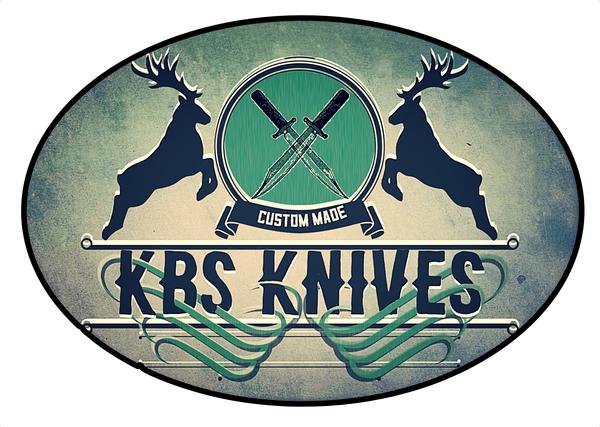
How to Make a Knife from a Rasp File: A Beginner-Friendly Guide
Share
There's something special about turning an old, worn-out tool into something wholly new and helpful. For knife makers, one of the most exciting projects is transforming a rasp file into a fully functional handmade knife. Rasp files are made of high-carbon steel, which means they can be hardened and sharpened into a blade that's tough enough for Hunting, Ranch, or bushcraft use.
In this guide, we'll walk you through the step-by-step process of making a custom knife from a rasp file, from selecting your tools to adding the finishing touches. Whether you're a beginner looking for a fun DIY project or a seasoned bladesmith, this process blends creativity, skill, and tradition.
Why Choose a Rasp File for Knife Making?
Rasp files are perfect for knife making because:
- They're usually made from high-carbon steel, which holds a sharp edge well.
- The material is tough and durable, ideal for hunting knives, cowboy knives, or survival blades.
- Repurposing old files is an eco-friendly way to upcycle steel and create something new.
- Each rasp knife carries a story—it's not just a blade, it's a piece of functional art.
Historically, blacksmiths and pioneers often used scrap steel to forge tools and weapons. Turning a rasp file into a knife keeps that frontier tradition alive.

Tools and Materials You'll Need
Before starting, gather your essentials:
Tools:
- Forge or propane torch
- Hammer & anvil
- Tongs and vise
- Belt grinder or angle grinder
- Drill with metal bits
- Sandpaper and polishing tools
Materials:
- Old rasp file (must be high carbon steel)
- Handle material (wood, antler, bone, micarta)
- Brass pins or rivets
- Epoxy resin
- Leather (for making a sheath)
Safety Gear:
- Protective gloves
- Goggles
- Leather apron
- Respirator (for grinding dust)
Preparing the Rasp File
The first step is to anneal the file—softening the steel so it can be shaped more easily.
- Place the rasp file in the forge or heat source until it glows bright red.
- Let it cool slowly in ashes or sand.
- This removes brittleness and makes shaping much easier.
Next, grind off the file teeth to create a clean surface. Draw your knife design on the steel, marking the blade shape and tang. You can choose a clip point, drop point, or even a custom profile depending on your style.
Forging the Blade
With your design ready, heat the file again until it's glowing. Place it on the anvil and begin hammering it into shape.
- From the blade profile: hammer the edges to create a rough outline.
- Shape the tang: extend and flatten the tang to match your planned handle design.
- Forge the bevels: angle the hammer blows to establish the cutting edge.

This is where the knife begins to take shape. Forging is as much art as it is skill, and no two handmade knives look precisely alike.
Grinding and Shaping
After forging, it's time to refine the knife.
- Use a belt grinder to smooth the blade and shape bevels more precisely.
- Drill holes into the tang for the pins or rivets that will secure the handle.
- Keep checking for balance—this ensures the knife feels good in hand.
At this stage, the knife should resemble a blade, although it has not yet been hardened or sharpened.
Heat Treatment
To turn the rasp file into an actual blade, it must be heat-treated. This process hardens the steel for durability.
- Hardening: Heat the blade until it's red-hot, then quench it quickly in oil (or water for certain steels). This makes the steel very hard—but also brittle.
- Tempering: Place the hardened blade in an oven at around 400°F (200°C) for 1–2 hours, then let it cool. This reduces brittleness and adds flexibility.
After this, the steel has the toughness and edge retention needed for a working knife.
Crafting the Handle
The handle is where you can add personal style.
Steps:
- Cut handle scales (wood, bone, antler, or micarta) to fit the tang.
- Drill holes for the brass pins.
- Apply epoxy and secure the scales with pins or rivets.
- Clamp the handle and let it cure.
- Shape the handle with files, sandpaper, or a grinder until smooth and comfortable.
This is your chance to create a handle that's ergonomic, attractive, and unique.
Finishing Touches
Now the knife is almost complete.
- Polishing: Use finer grits of sandpaper and polishing wheels to give the blade a clean finish.
- Sharpening: Establish a razor-sharp edge with a whetstone or sharpening system.
- Protection: Coat the blade with oil or wax to prevent rust.
- Sheath making: Craft a leather sheath for safe storage and easy carrying.
At this stage, you'll have a fully functional knife made from a rasp file.
The Final Result: A Knife with a Story
Unlike factory-made blades, a rasp file knife is one-of-a-kind. It carries the marks of your craftsmanship and the history of the steel it came from. Some people display their knives as collectibles, while others use them as hunting knives, camping tools, or survival gear.
Either way, the pride of holding a knife you forged with your own hands is unmatched.
Conclusion
Making a knife from a rasp file is more than just a project—it's a journey into the world of bladesmithing. You learn the traditional skills of forging, heat treating, grinding, and crafting while creating something practical and beautiful.
Whether you're a beginner or an experienced maker, this project proves that even an old tool can be reborn as a blade that will last a lifetime.
👉 Ready to explore more? Explore our collection of custom handmade Rasp knives and forging guides for inspiration.


